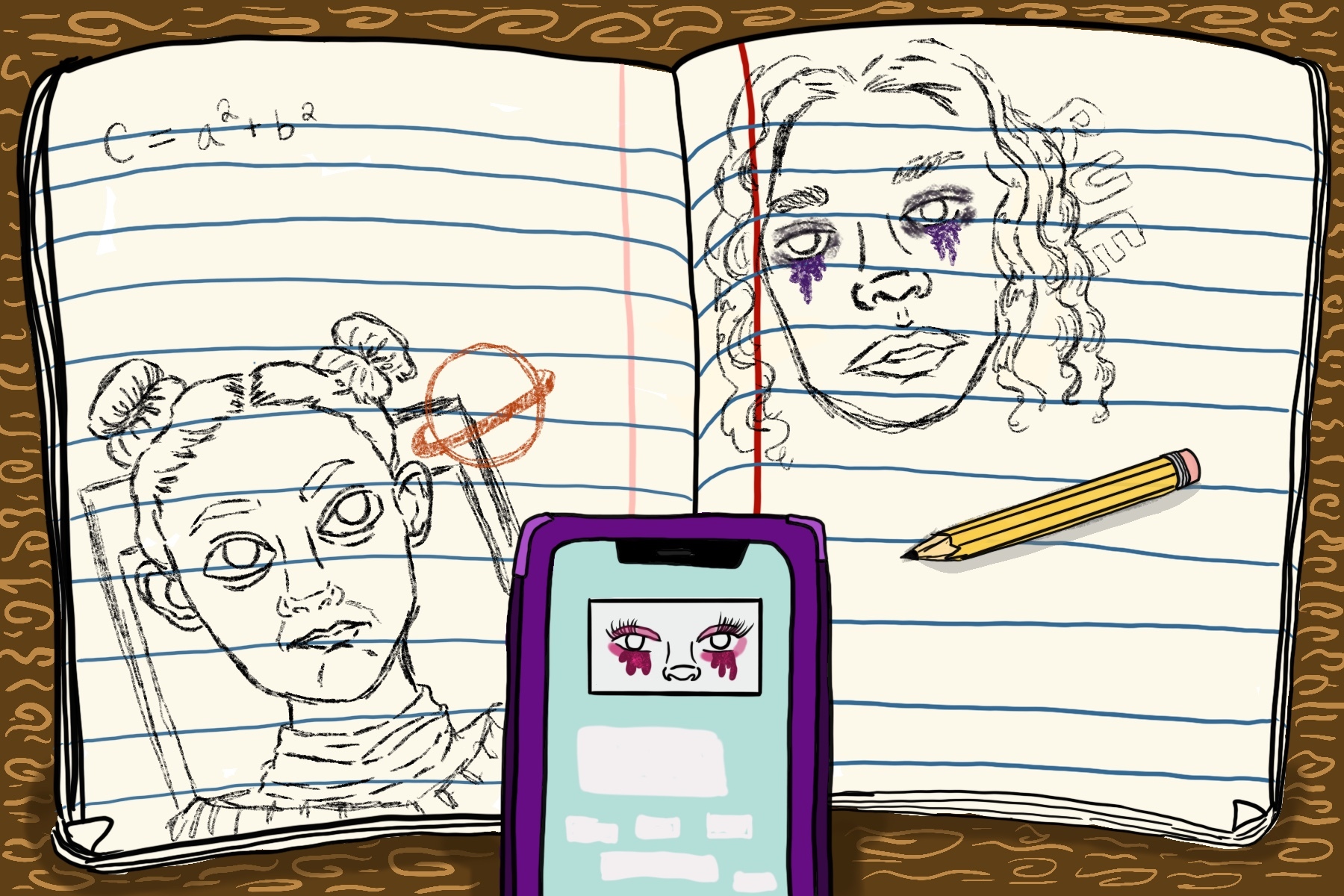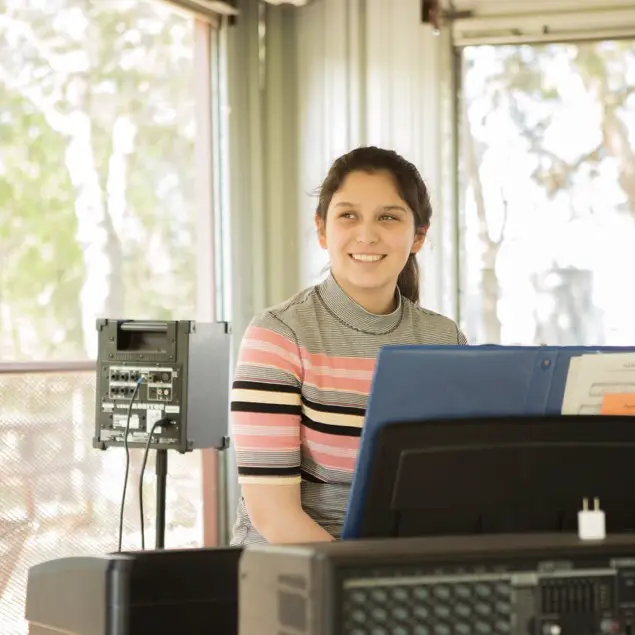In May of 2019, the blockbuster show “Game of Thrones” ended. Less than a month later, a new show produced by both HBO and A24 took over its time slot: “Euphoria.” The dark and gritty teen drama featured an ensemble cast led by Zendaya, who plays a 17-year-old drug addict fresh from rehab. It is a shift in genre for the television company, but the production and aesthetic went viral across every social media platform. In early January, the second season aired after a hiatus brought on by the COVID-19 pandemic, with this season’s premiere attracting twice as many views as the first season’s.
While its aesthetic, art direction and music production make it stand out from other teen dramas, elements of its storytelling have long been questioned. Why set the characters in high school, and not college? For how graphic the show is, from explicit and excessive nudity to drug abuse, are certain stories worth telling if the cast is supposed to portray high schoolers? Do teen dramas have a limit to what writers can and cannot put their characters through? Though well-intentioned, the show reveals an issue with television as of late: Certain storytelling elements of teen dramas create unhealthy expectations of high school and teenagers today.
As the early stages of a show take form, writers are daunted by the kind of story that should be told. The easiest tropes teen dramas follow include love triangles, growing up and facing adulthood. When it comes to “Euphoria,” the creator of the show, Sam Levinson, has described it to Vulture as a “kaleidoscopic look at the lives of troubled, yearning teenagers on a journey of self-discovery that happens to involve tons of sex, drugs, and cathartic weeping.” To his audience, though, it seems like Levinson used sweeping cinematography and vibrant colors to glamorize adult themes like addiction, manipulation and abuse.
While the show portrays both the whimsical and claustrophobic feeling of being a teenager in full, some storytelling decisions can’t help but make the viewer think, “Is this really what high school is like for some people?” Throughout Season 1, Zendaya’s character, Rue, abuses various kinds of pharmaceuticals. While other characters only experiment with drugs, Levinson told Vulture that “Rue is the only person who is struggling with drug addiction,” which is something that is more likely to happen in a real high school.
Also, as with many shows on HBO, “Euphoria” is infamous for its graphic nudity, which some argue would not change the story if it was taken out. While a sex scene can create drama, several per episode has had audiences scratching their heads and wondering if it is really helping to move the story forward. It reached a point where Sydney Sweeney, who plays Cassie on the show, spoke out about the early episodes of Season 2 and what seemed like an exploitation of her character.
As audiences criticized Levinson for including such graphic scenes with such little impact on the story, Sweeney told Variety about conversations with the show’s creator in which there were “more nude scenes for her character in Season 2 that she was able to remove without any challenge from the creator.” While having her voice heard was beneficial for Sweeney, viewers and critics alike still voiced concern over the number of nude scenes written for a character who is supposed to be a senior in high school.
What makes Sweeney having to argue for fewer nude scenes in “Euphoria” so alarming is the issue prevalent in many teen dramas today: its age-inappropriate casting. For a show like “Euphoria,” its ensemble cast will feature actors pushing 30 playing characters still in high school. Shows have been doing it for years though, most notably starting with the release of “Glee” in 2009.
Much like “Euphoria,” “Glee” was a teen drama about high schoolers, a notable difference being that the latter’s characters sing about their problems and do far fewer drugs than the HBO show’s. The actors in “Glee” sold the story and the melodrama better than shows that came before thanks to the talent of its aged-up cast members. With the release of “Glee,” the idea of casting teenagers to play high schoolers was tossed aside in favor of casting younger-looking adults in their 20s. The oldest actors, who played sophomores, were Cory Monteith (27) and Mark Salling (26).
In the years to follow, shows set in high school like “Teen Wolf” and “The Vampire Diaries” began to play into more supernatural tropes, and casting older actors to play teenagers added to the suspension of disbelief. However, actors in their 20s are far more developed than their on-screen teenage counterparts — both physically and mentally — and therefore can make younger viewers aspire to look or act a certain way to emulate what is seen on television. This is what makes audiences question whether these stories would be more appropriate in a setting of higher education, such as a college or university. One of the only companies that regularly casts teenagers, it seems, is Disney, and it is due to a target demographic that falls in the same age range. As a result of trying to seem more grown-up, shows written by competing companies put forth alluring narratives of what high school can be.
Teen Vogue also made a point to mention the laws regarding minors working on set, which can bring difficulties with shooting. The magazine quotes Marcia Ross, a casting director known for films like “Clueless” and “10 Things I Hate About You.” She mentioned that “actors under the age of 18 need to have guardians on set and work a limited set of hours because of schooling,” which further motivates productions to cast older actors who can work on their own. Again, Disney has examples of stars who complete their schooling while working on shows and movies. However, when it comes to casting adults as teenagers, networks can take more risks during filming, more of the budget can go toward the production, and there is less of a liability to worry about when it comes to long shooting days. If executed correctly, the casting of teenagers can offer more verisimilitude, but if not, productions can be ended entirely.
If a project does decide to cast accurate, appropriately aged actors in the roles written, the story could resonate more strongly with the audience. Before “Glee,” there were shows like Nickelodeon’s “Degrassi” and E4’s “Skins” that cast appropriately aged actors for the stories they wanted to tell. As early as 2001, “Degrassi: The Next Generation” and “Skins” have gone on to depict high school and growing up as both inevitable and turbulent while also using age-appropriate casting. In “Degrassi,” the ages of its cast members at the beginning of the show’s production were anywhere between 13-15.
According to Unpublished, the cast of “Skins” ranged from 14 to 18. In the same article, it is noted that Kaya Scodelario, who played Effy, was under the minimum age requirement of 16, but still went on to become “the face of both the show and the network”; not only had “Skins” gone about putting minors in uncomfortable situations, but E4 made the youngest character with the saddest story the face of the program. Although characters on “Skins” are just as messy as those seen in “Glee” or “Euphoria,” the plots are more based in reality and show characters who look just like the viewers.
There are exceptions to a writing team and casting director working together to create a story told with actors who do not look substantially older than high school age.
Not every show with age-inappropriate casts will cause problems for younger audiences. In 2019, Netflix released “Sex Education,” which has rejuvenated the teen drama genre. One thing the show does differently is educate the audience on adolescence and the unknowingness of maturing. Netflix’s “Sex Education” has (as of writing) had three seasons of British teens trying to navigate their way through secondary school.
While depictions of drug use are not as blatant as on “Euphoria,” the name does hint at teenagers experimenting with themselves throughout high school. Though adult themes are present, such as teen pregnancy, mental illness and even some themes of addiction, the show takes strides in educating the audience on practicing safe sex through characters’ storylines. It shows the awkwardness of the first time and trying to accept who you are in today’s world. Although the show still casts actors who are older than their characters, its producers take the writing given and execute it so the viewer not only understands but relates to what characters are going through.
If there is anything the last 20 years of television has taught audiences, it’s that teen dramas are a timeless genre. With each decade, there is a new generation of teenagers who turn on specific shows and find something relatable to their own lives. Whether or not teens turn off the television is up to the writers who create modern shows. Oftentimes, shows put quite the embellishment on common tropes and dazzle the audience with extravagant cinematography, but it can make the viewing experience less immersive.
Teenagers could look at dramatized aspects of these shows and grow to expect their own high school experiences to be full of moments that are outstanding and sensational — without seeking to make these moments themselves. High school is bound to be full of melodramatic moments, but to expect the kind of theatrics seen in teen dramas is nothing short of unfortunate and unhealthy for a teenager. As much as the high school experience can bring forth interesting storytelling elements, it should be handled with caution and care.

















